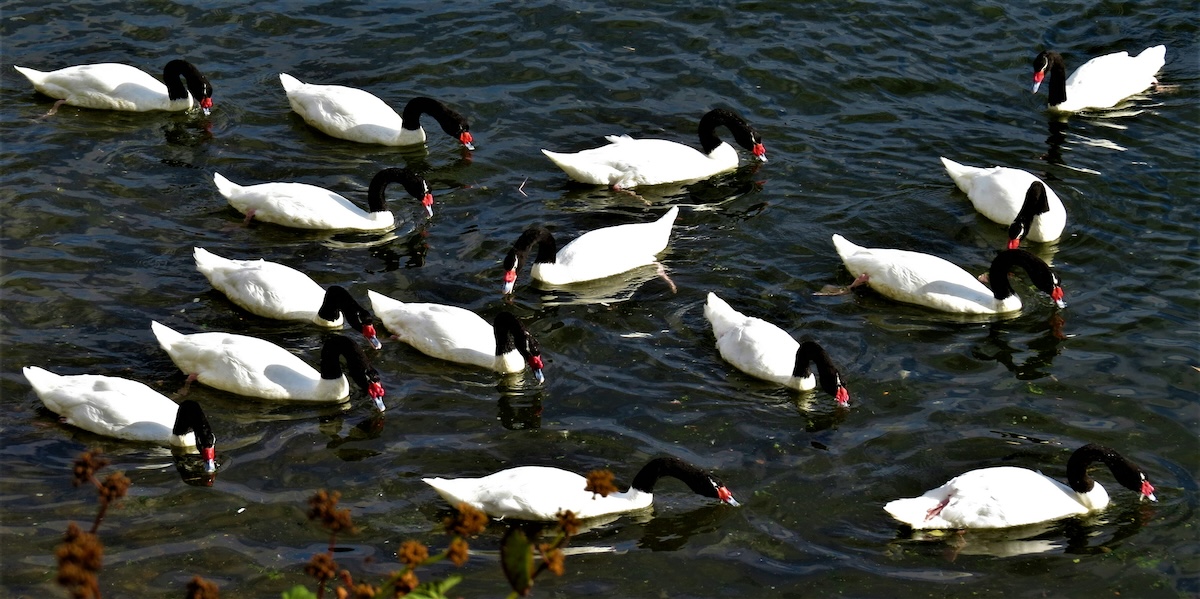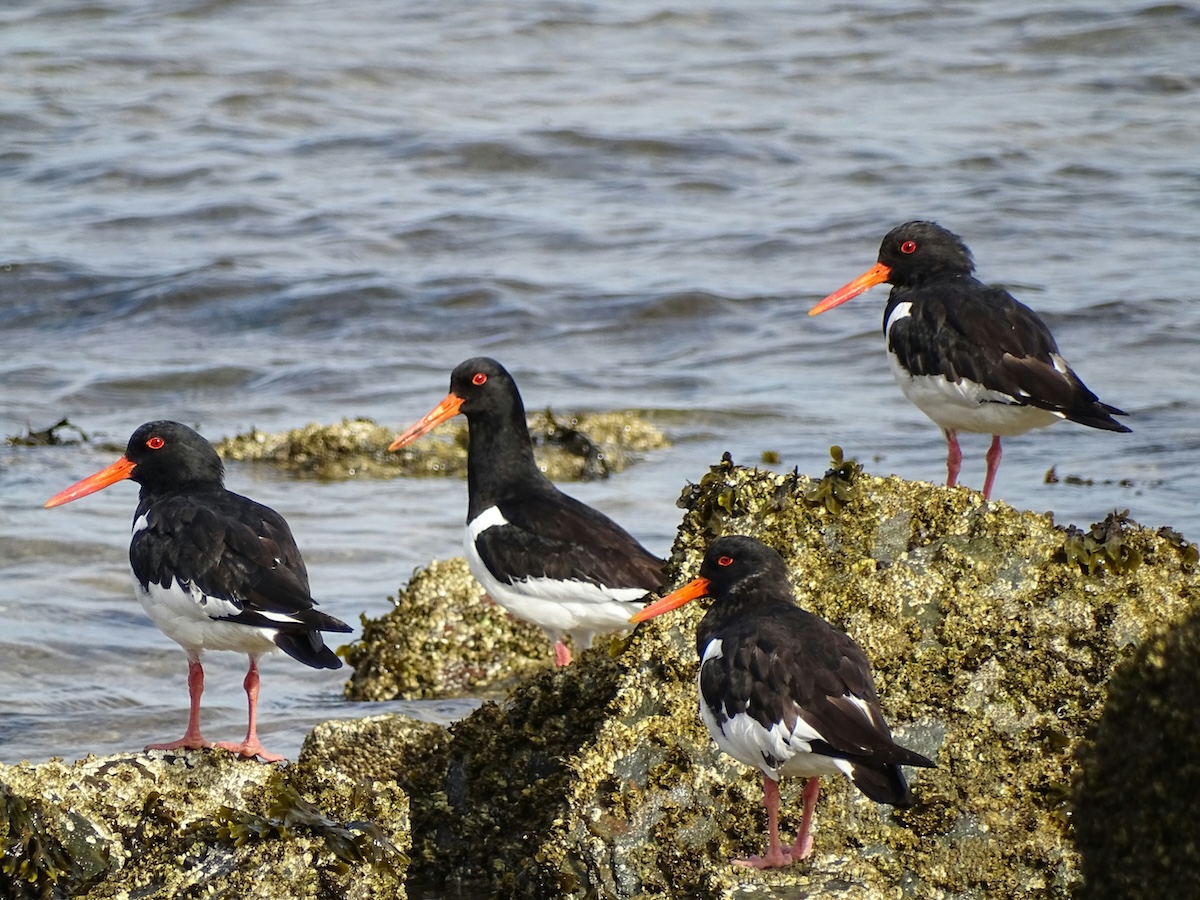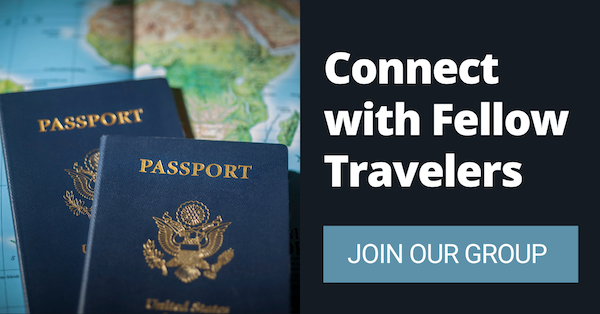
Where to See Penguins and Other Birds on Chiloé Island: Birdwatching Chile
By: Heather Keys
Skip to Section
Chiloé Island, located off the southern coast of Chile, is a must-see for birdwatchers. This second-largest island in Chile particularly appeals to birders thanks to its varied environments: you’ll find everything from forests and wetlands to shores and rocky outcrops. Each one supports a unique mix of bird species, so no matter where you go, you’re bound to see something interesting.
The temperate rainforests on the island are home to some of its most elusive species. Here, you might catch a glimpse of birds that stay hidden from casual eyes—and towards the coastline, the rugged shores are where waterbirds gather, while the wetlands become gathering spots for species you won’t often see elsewhere.
Let’s learn about some of the birds you can see around Chiloé Island, and where to find them!
Endemic and Rare Birds of Chiloé Island
@dr.liebermann The Chucao Tapaculo (Scelorchilus rubecula), called “Chucao,” is found in central and south Chile and adjacent regions of Argentina. #bird #birds #chucao #chile #aveschilenas #aveschile #quena #flute #flutist #flautist #birdlovers #musicscore #musiccomposition #soundsofnature #animalsounds #eartrainingchallenge #eartraining #musictheory #musicteacher #musician #chileanmusic #musicachilena #ethnicmusic #classicalmusic #classicfm #oiseau #birdsong #vogelgezwitscher ♬ original sound – Alexander Liebermann
For those who come to Chiloé hoping to see something rare, the island delivers. It’s home to several species you won’t easily find outside this region. The Chucao Tapaculo is one such bird, famous for its secretive nature and distinct, ringing song. It’s a forest bird, and spotting one could be a well-deserved reward after hours of patient watching. Another rare find is the Black-throated Huet-huet. This bird is quite shy, usually staying close to the forests where it prefers to hide.
Magellanic and Humboldt Penguins of Chiloé Island
Among the island’s biggest draws are the penguin colonies. The Puñihuil Penguin Colony, located on the island’s northwestern coast, is the only place in the world where you can see both Magellanic and Humboldt penguins living side-by-side in their natural habitat. Watching these penguins up close as they nest, feed, and interact with each other is a highlight for any nature lover. The rugged cliffs and rocky shores make it one of the most memorable birdwatching experiences on the island. Want to see penguin chicks? Visit in January!
Waterbirds Along the Chiloé Island Coast

Photo by Yaro Felix Mayans Verfurth on Unsplash
If waterbirds are what you’re after, Chiloé doesn’t disappoint. Its coastlines, estuaries, and wetlands are home to a wide range of waterbirds. The Black-necked Swan is one of the island’s most striking residents.
The island also attracts Chilean Flamingos, adding a splash of pink to the scene. You’ll find them wading in the shallows, usually in large groups. The Fuegian Steamer Duck is another unusual bird you’ll only find in southern Chile. Though flightless, it’s adapted to life on the water, using its wings to paddle quickly across the surface. Herons, egrets, and various species of gulls also make frequent appearances, meaning that you’ll have plenty to see near the island’s waterways.
Migratory Birds Passing Through Chiloé Island

Photo by Ronan Furuta on Unsplash
Chiloé also serves as a temporary home for migratory birds during certain seasons. The island becomes a stopover for species traveling from faraway places, making for a dynamic bird list throughout the year. Among these migratory birds are the Hudsonian Godwits and Whimbrels, long-distance travelers that pass through during their seasonal journeys.
The arrival of these migratory birds adds an extra layer of excitement to the birdwatching experience on the island—you never quite know what you might see, and that unpredictability keeps things interesting for seasoned and amateur birdwatchers alike!
Birdwatching Hotspots in Chiloé Island
Chiloé Island has no shortage of places to catch sight of its many bird species. If you’re serious about birdwatching, you’ll want to visit a few key spots around the island. Each offers something unique in terms of the birds you can see, as well as the habitats they call home.
Chiloé National Park
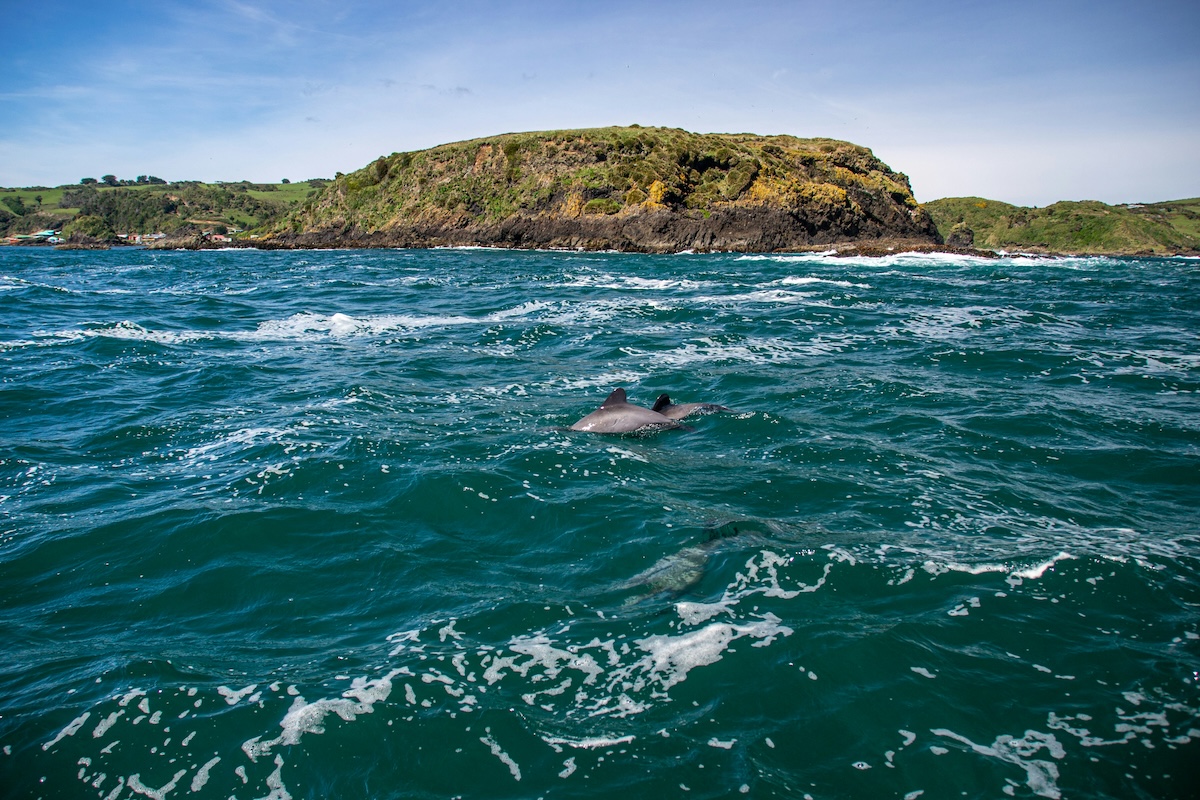
Photo by David Vives on Unsplash
Chiloé National Park is a must-see for any birdwatcher visiting the island. Located along the western side of the island, much of the park is comprised of the Chilean Coastal Range, with forests throughout.
If you’re looking to spot the elusive Chucao Tapaculo, this is one of the best places to try. The bird’s distinct call will often give away its location before you see it, but with patience, you can track it down!
Another notable resident of the park is the Magellanic Woodpecker. Known for its bright red head and bold black-and-white plumage, this woodpecker is an absolutely gorgeous sight. It’s often heard long before it’s seen, hammering away at trees in search of food. The park’s forests are home to plenty of other species as well, making it a great spot for birdwatchers who prefer woodland environments.
Bonus: you can see all kinds of whales here, including humpbacks, blue whales, and others if you’re close enough to the shore. And there’s a penguin colony!
Natural Heritage Site Islotes de Puñihuil
If penguins are high on your list, then the Puñihuil Natural Monument is where you’ll want to head. This coastal site is famous for its colonies of both Magellanic and Humboldt penguins, and is the only place where they live side-by-side in the wild. The birds nest on small islets just off the shore, and boat tours can take you close enough to observe them without disturbing their natural behavior.
In addition to penguins, you might spot other coastal birds around the area. The rocky shores and choppy waters create an environment that attracts various seabirds, adding to the list of species you can encounter during your visit.
Chepu River
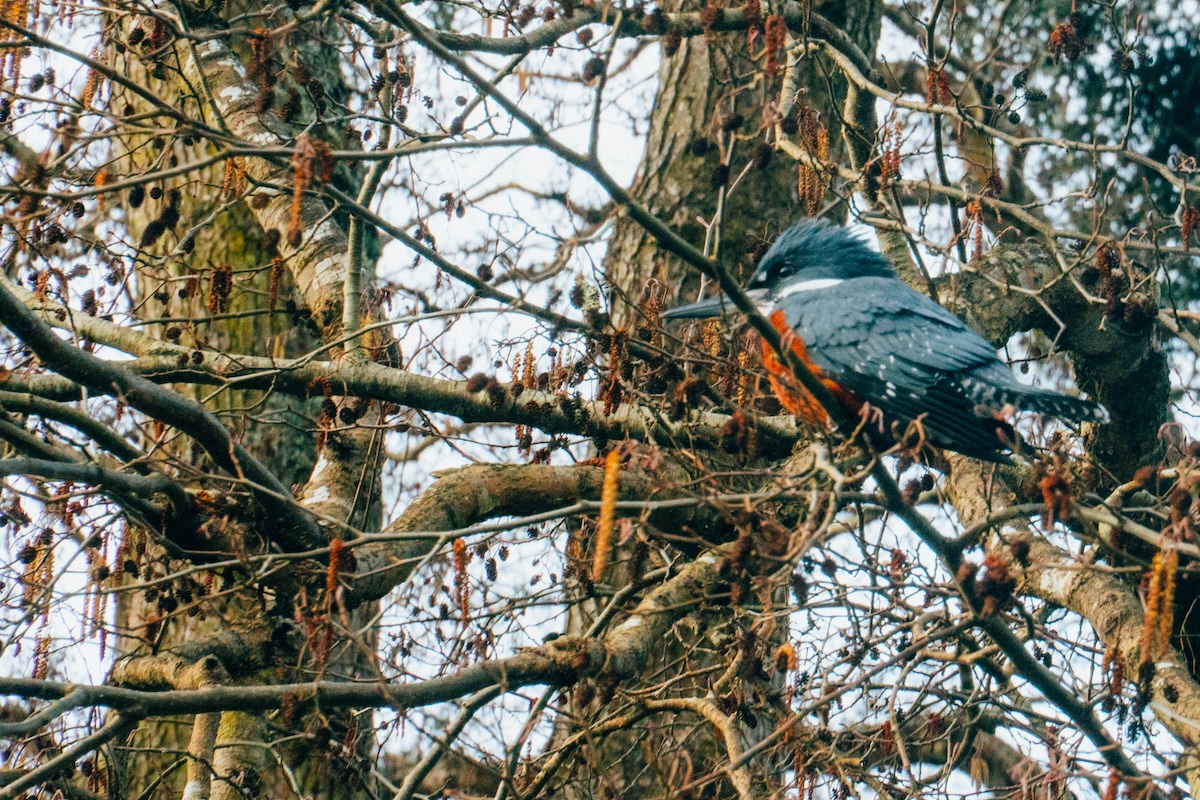
Photo by Gustavo Sánchez on Unsplash
The Chepu River offers a different kind of birdwatching experience—one that’s best enjoyed from the water. Kayaking or boat tours along the river give you access to areas where waterbirds thrive. Kingfishers are a common sight here, darting over the water in search of fish. Their sharp calls often announce their presence before you catch sight of them.
In the quieter, more remote parts of the river, you may also spot herons and other waterbirds that stick close to the riverbanks. The peaceful surroundings of the Chepu River make it a prime location for birdwatchers who prefer a slower pace and a bit of solitude while observing.
Caulín Bay
Caulín Bay is another spot that birdwatchers won’t want to miss. It’s a protected area with both coastal and wetland habitats, which means you’ll find a broad range of species here. Shorebirds are plentiful, drawn to the mix of sandy beaches and shallow waters. You might see various types of plovers, sandpipers, and oystercatchers as you explore the bay.
Waterfowl also make their home in Caulín Bay. Among the most notable species are Black-necked Swans, which glide gracefully across the water. This area is well-protected, so the birds are generally undisturbed, making it easier to observe them as they go about their daily activities.
Coastal Areas
Finally, the coastal areas around Chiloé are worth exploring. From beaches to rocky shores and estuaries, these spots attract an abundance of coastal bird species. Gulls and terns are common sights, often seen diving for fish or perched on rocks along the shore. Oystercatchers, with their long, bright red bills, can be found scouring the beaches for shellfish.
Estuaries offer another layer of birdlife, as wading birds take advantage of the shallow waters to hunt for food. These areas are often full of life, and the variety of species you can see in a single visit makes the effort worthwhile.
Ready to Travel?
Chiloé Island is home to so many birdwatching hotspots that provide fantastic opportunities to observe different species in their natural environments. Whether you’re trekking through the forests of Chiloé National Park in search of the Chucao Tapaculo, or kayaking along the Chepu River to spot kingfishers, the island has something to offer for every type of birdwatcher!
Over to you: what’s your favorite birdwatching destination? Share your stories and tips with the Frayed Passport community!
About the Author
Originally from Indiana, Heather believes every destination has a story worth telling and a reason to visit. With a deep love of adventure, history, and psychology, she shares travel trivia, tips, and inspiration to encourage you to explore the world with curiosity and optimism. Read her other articles on Frayed Passport here.Featured image by Carlota Vidal on Unsplash
Information published on this website and across our networks can change over time. Stories and recommendations reflect the subjective opinions of our writers. You should consult multiple sources to ensure you have the most current, safe, and correct details for your own research and plans.
Frayed Passport is a participant in the Amazon Associates Program, an affiliate advertising program designed to provide a means for sites to earn advertising fees by advertising and linking to Amazon.com. We also may share links to other affiliates and sponsors in articles across our website.

